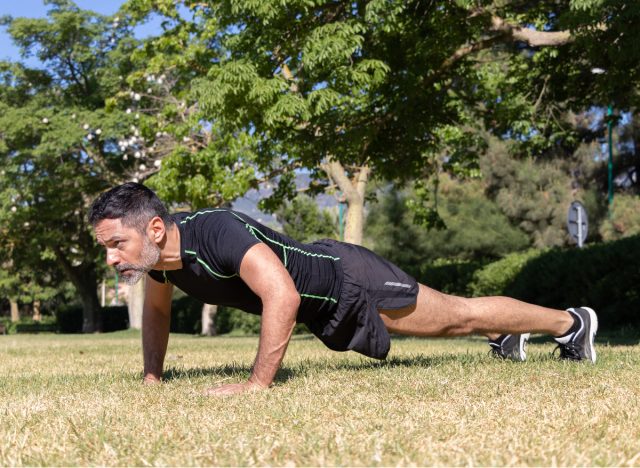There’s no question that adding strength training to your workout routine is beneficial for weight loss, but how often should you mix these workouts into your gym regimen? If you find yourself asking this question, look no further! While there may never be a clear-cut answer or one-size-fits-all approach to fitness-related questions, there are always a few ideas and tips that will help guide you to success. Below, we’ll delve into how often you should strength train to lose weight.
Having a well-rounded workout plan consisting of strength training and cardio is a surefire way to elevate your weight-loss efforts. Construct a workout routine that fits your schedule and is aimed toward the goals you want to achieve. Create variety in your workouts to keep yourself motivated and push your body whenever you hit the gym. (This helps keep the gym fresh and fun!) Lastly, don’t be afraid to challenge yourself. Look to increase the intensity (the weight you’re lifting) of your workouts, or aim to complete more sets and reps when you repeat a workout. Don’t forget to keep track of your progress. It’s incredibly motivating to look back at all of the progress you’ve made.
Keep reading below to dive deeper into the benefits of strength training for weight loss, discover how often you should strength train, and check out the best tips for mixing strength training into your fitness routine. When you’re finished, be sure to read up on these 5 At-Home Strength Workouts for Belly Fat.
How is strength training beneficial for weight loss?

Strength training is a game-changer for your weight-loss journey and provides many benefits to help you get closer to your weight-loss goals. Participating in a regular strength training routine will help you increase lean muscle mass, enhance calorie burning and metabolism, and improve your overall body composition.
One of the best effects of strength workouts is the development of lean muscle mass in the body. When you have more muscle, your body becomes more efficient at burning calories and boosting your metabolic rate. Keeping a dedicated strength routine in your workout plan is a pivotal piece to the weight-loss puzzle.
Strength workouts train multiple muscle groups at once—especially if you utilize the awesome benefits of compound exercises—and lead to a significant increase in the amount of calories burned. Plus, your body continues to burn these calories post-workout as it repairs and rebuilds muscle tissue. Strength training gives your metabolism a significant boost, not just during the sessions, but also throughout the day, making your body more efficient even when you’re not exercising.
Combining the effects of strength training leads to improved body composition. While the number on the scale might not drastically change, strength training can lead to improvements in reducing body fat percentage and increasing lean muscle mass.
How often should you strength train to lose weight?

The weekly recommendation for strength training, according to the National Academy of Sports Medicine, is a minimum of two days each week with exercises that engage all of the main muscle groups (at least one set of eight to 12 reps per muscle group). This frequency allows your workouts to help build and maintain muscle mass, which in turn supports your metabolism and overall calorie burn—creating the perfect complement to cardio workouts.
My best advice is to fit in strength training as frequently as your schedule permits. If shedding weight is your primary aim, maintain your cardio sessions while complementing them with dedicated days for focused strength training. Strike a healthy balance that best suits your schedule and aligns with your weight-loss objectives by blending both cardio and strength training workouts.
All in all, consistency delivers results. If you’re limited to fewer weekly sessions, aim for longer, more intense workouts, maximizing each rep and set. Alternatively, if shorter, more frequent workouts suit your schedule, ensure those sessions are high-energy and focused. Staying consistent, whether with fewer intense workouts or more frequent shorter ones, fuels motivation and accelerates progress toward your weight-loss goals.
Tips when strength training for weight loss:

Check out these five tips for strength training to dial in your workouts and keep yourself progressing towards your weight-loss goals!
1. Be consistent.
Consistency is a key factor in your conquering your weight-loss goals. Here are a few tips for staying consistent:
- Find a routine that works for you. If your schedule only allows three workouts a week, make sure you’re focused and making the most of them.
- Progress slowly but surely. Gradually increase your workout intensity (weight lifted) or duration over time. Seeing these markers of improvement will boost motivation and keep your confidence up!
- Set SMART goals: Simple, Measurable, Achievable, Realistic, and Timely. Set goals that challenge you while remaining reasonable. Unrealistic goals might hinder your progress and motivation at the gym.
2. Rest and recover.
Make sure all the effort you’re putting into the gym is wasted outside of it. What are you doing the other 22 to 23 hours of the day? Eat a balanced diet, stay hydrated, focus on mobility, and don’t be afraid to mix in some meditation sessions to keep the stress levels down. In addition, don’t sleep on a good night’s rest; getting an adequate amount of sleep is crucial for recovery.
3. Combine strength training and cardio.
Pairing strength training and cardio will help you build muscle and boost your metabolism, enhancing caloric burn and aiding in weight loss. Aim for a balanced mix to make the most out of your workout program, but make sure to knock out the strength workouts first, followed by cardio.
4. Train compound exercises first.
Compound exercises engage multiple muscle groups at once, allowing for greater increases in strength and weight loss. Movements such as squats, deadlifts, lunges, and presses are excellent options to add to your workout regimen. Start your workouts with one to two compound exercises followed by isolation exercises like leg curls, leg extensions, curls, and tricep extensions.
5. Track your progress.
Track your progress in the gym by keeping a record of your workouts, weights used, measurements, and any other measurable information. Being able to reflect on the work you’ve done helps motivate you and build on consistency. It’s all rewarding to see how far you’ve come!

